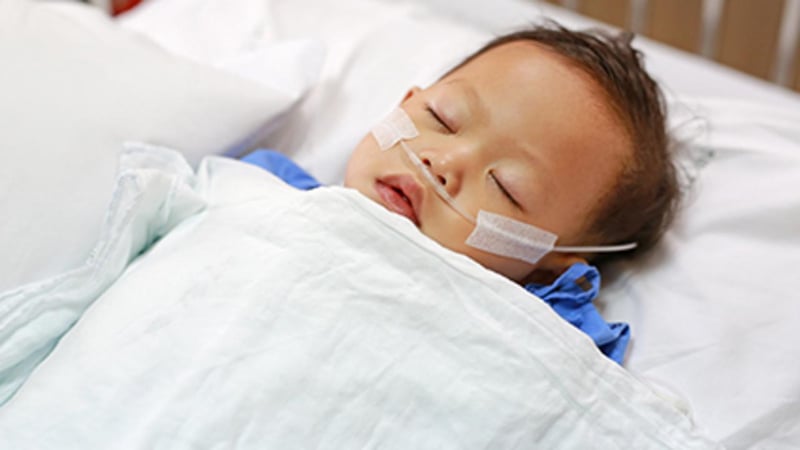Get Healthy!

- Posted November 14, 2022
Does Your Child Have a Cold or Severe RSV? Signs to Look For
As most American parents already know, cases of respiratory syncytial virus (RSV), a common illness of childhood, are surging this year. Hospitals are filling up with babies and toddlers very ill with the easy-to-catch illness, which is coming back with a vengeance after lying low during the pandemic.
But RSV can be deceptive: It starts out looking like any other childhood cold, and for most kids who get it, RSV remains mild.
But severe cases do occur. Doctors aren't even sure why one child has a mild case, while another requires hospital care. Each year, up to 80,000 U.S. children are hospitalized due to severe RSV, according to the U.S. Centers for Disease Control and Prevention.
What's different this year?
Dr. Jessica Ericson is a pediatric infectious disease specialist at Penn State Health Children's Hospital in Philadelphia. She said the 2022-2023 RSV season seems to have started very early, with cases showing up in August and September.
"Also, what's really different is the number of children who have these viruses and who are sick enough to be admitted to the hospital,"she said in a Penn State news release. These are "children who need oxygen and need to be admitted to the intensive care unit,"Ericson explained.
It's most probably a "backlog"of sorts happening: Kids who normally would have contracted RSV over the past two seasons instead were sequestered at home and told to wear masks and distance if they did mingle. "Now that we've stopped doing that, those children are now encountering RSV and other viruses for the first time,"Ericson noted.
Early signs
There are signs and symptoms to look out for, but in the beginning RSV presents with the humdrum signs of colds, flu or COVID: runny nose, congestion, coughing and fever. Diarrhea, a lack of appetite and headaches can also appear.
All of that means that "there's no way to tell at home or even in your doctor's office if a child has RSV or influenza or COVID or some other virus, without a test,"Ericson said.
But because their respiratory passages are so much smaller than that of older kids or adults, very young kids and babies are much more likely to get a case that develops into something severe. When that happens, patients may require oxygen or even a ventilator to help them breathe.
"The elderly can sometimes have serious problems from RSV also, particularly the very elderly, cancer patients and adults who have immune system problems,"Ericson added. "But mostly, it's small children."
Again, most cases will just look like a cold, and then improve over time. In this situation, it probably doesn't make sense to test the child for RSV (a nasal swab test), since there's no good treatment other than rest, proper nutrition and hydration.
Signs of severe RSV to look out for
Certain symptoms could mean a child's RSV is getting worse, however.
"When you start seeing clues that it's something more than a cough,"Ericson said. "When a child is coughing so hard they vomit, or when they're coughing so hard, they can't eat. For a little baby who's breastfeeding or being fed from a bottle, if their nose is so stuffed up that they can't take the milk, they can end up becoming dehydrated or develop nutrition problems. They need to see a doctor."
Breathing is the biggest issue to monitor, she said.
"Breathing fast, breathing hard. Breathing hard in a baby looks like they're using their belly to help get air in and out of their lungs. Their skin is sucking in between their ribs with each breath,"Ericson explained. "Their head might be bobbing as they're trying to use their body to pull air into their lungs."
If difficult breathing like this commences, it's time to call a doctor, because the child may need "supportive care."
"That means we help their body do whatever it can't do because of the illness,"Ericson added. "So, if they can't eat, we give them nutrition through a tube down their nose or intravenously. If they're dehydrated, we'll give them fluids. If they can't get enough oxygen, we'll give them oxygen. If they can't breathe, we'll put them on a ventilator."
Luckily, the vast majority of babies and children in the United States who require hospital care for RSV will recover.
Stopping the spread
However, one good rule of thumb is to not let RSV spread beyond your family, Ericson said.
"If your child is sick, if they have runny nose, if they have cough and definitely if they have fever, they should stay at home,"she advised. "And that has always been our recommendation even well before COVID -- if you're sick, stay home."
And if you worry that your child is vulnerable to RSV, "then I think it's worthwhile to pay attention to think of the environment you're visiting,"she suggested. "Is it crowded? Are there lots of small children there?"Skipping the event or trying to hold it outside, as well as wearing face masks at indoor events, can cut transmission risks.
There is some real hope that "RSV season"could someday be largely a thing of the past, Ericson noted.
"The medical community has been working on developing an RSV vaccine for decades,"she said. "RSV and similar respiratory illnesses are the leading cause of childhood death globally. So, having an effective vaccine would definitely be a game-changer, especially internationally where children have a pretty high risk of death from respiratory infections. And RSV is the most common cause of respiratory infections in little children."
More information
There's more on RSV at the American Academy of Pediatrics.
SOURCE: Penn State Health Children's Hospital, news release, Nov. 9, 2022
